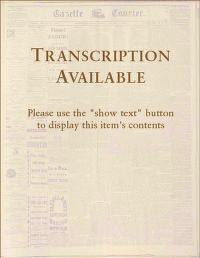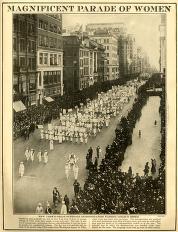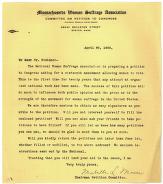|

Women Vote article published in Gazette and Courier

Excerpt from the "Boston Letter" article on Suffrage from Greenfield Gazette and Courier newspaper

"Magnificent Parade of Women" from "Around the World with a Camera"

"Beecher on Female Suffrage" article from Greenfield Gazette and Courier newspaper

"Why Should Suffrage Be Imposed on Women?

Suffrage letter to George Sheldon
|
Summary and Objective
Students will understand that over many decades, groups associated with the women’s suffrage movement employed a variety of political activities that moved the country toward adopting the 19th Amendment in 1920. Students will utilize historical documents that detail speeches at rallies, petitions, parades, newspaper editorials, letters, canvassing and even a mock vote to learn how both men and women pushed for women’s right to vote in the United States.
Teaching Plan
Step 1.
The class is divided into small groups and each group is provided with one or two documents.
Step 2.
In small groups, students read and discuss the documents, identifying the following: key individuals with influence, important ideas and opinions, and strategies used to influence public opinion about women’s right to vote.
Step 3.
Starting with the earliest document, each group presents to the class both a description and an analysis of the effectiveness of the political activity represented in each document. The teacher records the group's findings on a graphic organizer/chart on the board. Headings for the chart might include some of these political activities: rallies, petitions, parades, editorials, letters, mock vote, and speeches by well-known supporters of womens' suffrage.
Step 4.
After all groups have presented, the teacher conducts a discussion referring to data on the chart on the board. Key concepts that may come from this discussion include: how one political activity provides momentum for another; that many small, seemingly insignificant activities can add up; and that the movement had leaders who persevered. If time allows, compare the political activities used during the women's suffrage movement to another poliltical movements in the 20th or 21st century.
Step 5.
For homework, students are asked to imagine themselves as a 65 year old man or woman in 1920 and write a letter to a friend on what the 19th Amendment to the U.S. Constitution means to them. The letter should look back on the long struggle, incorporating material discussed in class. To motivate students, provide an example of a letter that might be acceptable.
|




